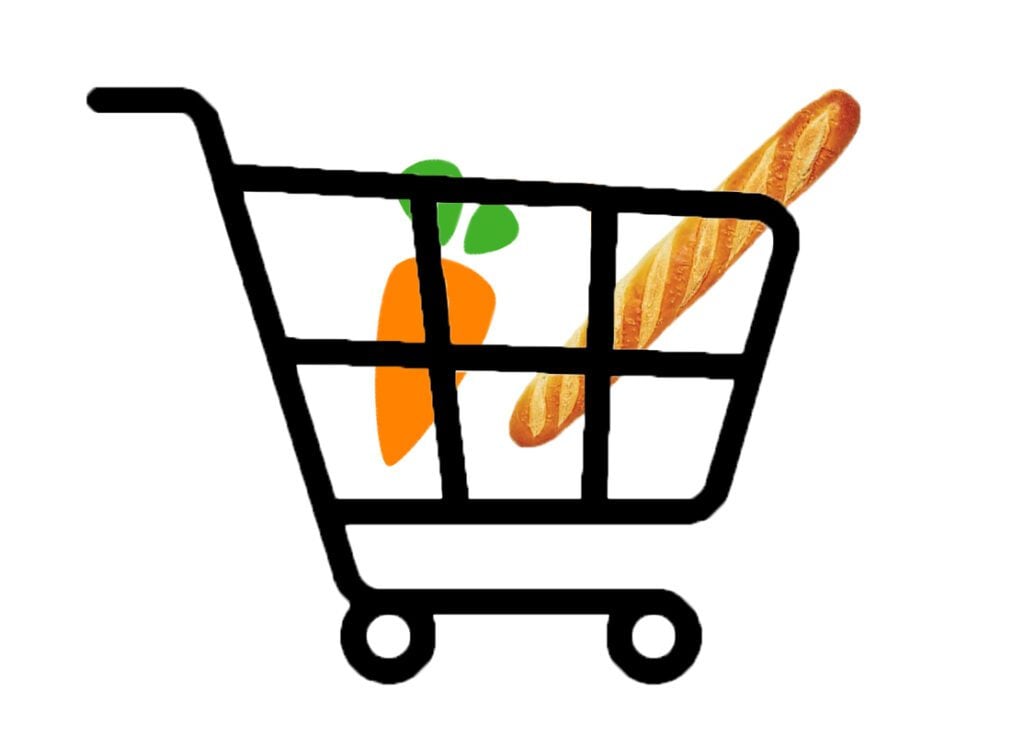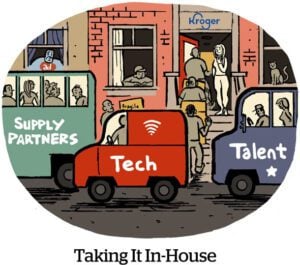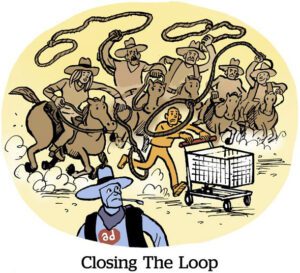The rise of retail media is, for advertisers, a lens into consumer behavior, some of which is intuitive and some that is far less so.
Instacart has a self-service portal advertisers can use to get basic information on sales and market share. But it also has an insights and analytics team for brands that want to go a little deeper into category trends or do share-of-wallet analysis.
If someone orders fabric softener on Instacart, for example, they’re 997% more likely to also order laundry detergent. And people who purchase hot dog buns are 1,228% more likely to add hot dogs to their cart.
Well, duh.
But Instacart has also observed a few head scratchers about how people shop online through its direct retailer partnerships with the likes of Kroger, Wegmans, Costco, ALDI and specialty health food chain Sprouts Market.
For instance, people who buy Greek yogurt are more likely to buy rice cakes, which makes sense if you think about it. And, not as easy to explain, customers who purchase diapers are more likely to buy trail mix and jerky. (Huh.)
“We see millions of customers and hundreds of millions of orders,” said Chris Rogers, Instacart’s chief business officer, who spoke with AdExchanger in Cannes. “And then we collect insights on what we see across the overall platform to understand human behavior.”
RMNs, ooh la la
This was Instacart’s second year at the Cannes Lions festival, which took place last week in the south of France, where retail media had a palpable presence.
Instacart executives were keen to tout its ads business from a suite at the Majestic Hotel on the Croisette, the main boulevard that runs through the heart of Cannes. A few minutes down the street, Target Roundel had a spacious booth right on the beach.
On Thursday, Albertsons Media Collective unveiled a working draft of its proposed retail media standardization framework during a panel session held, where else, on the beach.
Meanwhile, executives from ASOS Media Group, Ulta Beauty Media and Deliveroo were on the ground speaking and taking meetings, and Criteo, which is pinning its future on commerce media, chartered a yacht.
They were all in Cannes looking for their slice of the retail media pie, which Morgan Stanley predicts will be a $130 billion market by 2025.
Retail rollup
But although retail media is a large and growing channel, there isn’t an RMN easy button.
Which is why Instacart is making its retail media bet on helping small and midsize retailers take advantage of the RMN trend.
Large retailers like Albertsons, Kroger and Walmart have the resources to support their own ad tech, but that’s not the case for the longer tail of retail.
Instacart built and now powers the frontend ecommerce experience for 240 retailers on the web and in-app, including Publix, Wegmans and Sprouts. It’s got hundreds of engineers in Toronto, which was HQ for Unata, the grocery ecommerce developer Instacart acquired in 2018.
“A lot of retailers have grand ambitions,” Rogers said, “but actually building an ad tech stack and monetizing it is a pretty difficult thing to do.”
On the monetization front, Instacart has a self-serve platform, Carrot Ads, that allows advertisers to run and measure ads on retailer sites in its network. Sprouts is an early partner.
“Our main objective is to roll up the long tail, and no retailer is too small for us,” Rogers said. “Any retail media network that wants to compete for dollars needs to be able to drive and measure conversions.”
But tapping into consumer insights is another way to compete, he added.
So here’s one more who-woulda-thunk-it insight for the road: People who buy cat and/or dog food are more likely to also buy coffee on Instacat – sorry, Instacart – than the average customer.
(Can confirm that cat ownership overindexes with coffee consumption.)
















